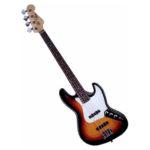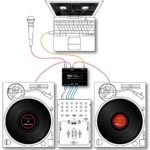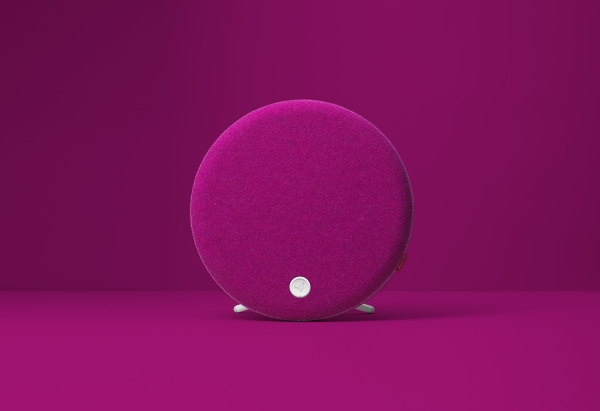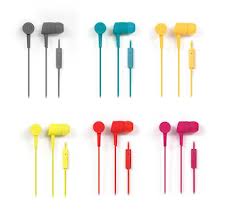Music has always been a part of our lives, and this has been consistently reflected in both our culture, and in certain technological advancements throughout history. Planet Ill and yours truly decided to examine the most influential electronic inventions led to today’s music and the current tools we use to create it.
Electricity became the driving force of industry in the 1800’s. The French developed the phonograph in the 1850’s and music was freed from being solely available through live performance. Although the phonograph is not a musical instrument, its invention marked the dawn of the new musical era where recorded music would become the norm. By the 1890 musicians began to record music and the music business became viable. The more advanced version of the phonograph was able to record 2-4 minutes of audio at a time. Frequently two phonographs were used for better sound quality.
In 1906, Thaddeus Cahill presented the first electronic musical instrument, the Telharmonium. It was an enormous, complicated machine that was hooked up to a telephone network, with massive acoustic horns attached to it to amplify the original sound which would be unmatched until the 1950’s. The Theremin, invented by Leon Theremin in 1917, operated by translating the hand movement produced by the ‘conductor’ near its two antennae into sounds. The complicated to master instrument produced those classic weird sci-fi sounds from the movies of the 1950’s.
Maurice Martenot (another French guy) invented The Ondes Martenot in 1928. Fundamentally it was a keyboard type instrument but was adapted to make vibrato, glissando and other effects. Classical composers were inspired by Ondes Martenot and incorporated it into the classical genera. In 1931 the electric guitar was invented. While many have claimed the invention, it transformed music forever. Jazz, blues, folk and rock all exploded because of this mega groundbreaking invention and when Gage Brewer gave the world’s first amplified electric guitar performance in 1932, it was a wrap.
Laurens Hammond developed the first electric organ. The instrument does not use pipes and the pipe-organ type tones are electronically generated using a unique method of additive synthesis. The Hammond Organ does not use pre-recorded pipe organ sounds other than by combining sine waves of different pitches. At this point music became an industry. Musicians, fascinated with pushing the boundaries of standard musical arrangements ventured into uncharted musical territory that eventually became experimental music.
Circuit bending was pioneered in the 1960’s and gave way to battery-powered electronic audio devices that in turn created the beginning of noise music. The mini Moog Synthesizer in 1970 became a successful invention due to its portability and ability to manipulate sound efficiently. The Beatles, Pink Floyd, Gary Newman among others used the synthesizer on a regular basis and Stevie Wonder’s mastery of the Moog put a stranglehold on the Grammy Awards during the 1970’s.
The massive popularity of music that emerged thanks to the electronic instruments created a demand for portable sound machines and Sony gave the word the Walkman that put music into the hands of almost everyone around the globe on July 1978. Over 100 years after the invention of the phonograph, music was now wholly portable and directly in the hands of individual consumers.
The original Technic hi-fi turntable SL1200 debuted in the early 70’s and in combination with looping techniques (created with the invention of the electric tape in the 60’s) gave birth to the modern R&B and Hip-Hop. A new crop of producers emerged who were able to make music by rearranging and sectioning existing compositions without knowing how to actually play instruments. Unfortunately Technic just announced the discontinuation of the revolutionary model just as Sony announced the death of the Walkman after 30 years of continues production on October 22nd, just one day before the 9th anniversary of the iPod, which took portability to astounding levels by allowing consumers to walk around with virtual music libraries on their mp3 players.
 In the 1980’s the emergence of dance music records that employed primarily electronic instruments and the genres of Electro music, techno, house, acid, rave and trance music all emerged during this period. The 1990’s brought about computer-assisted programs that created even more stylistic musical possibilities. The 2000’s brought laptop performance music, this officially made it possible for users to create music in a way completely removed from the classic instrumental approach.
In the 1980’s the emergence of dance music records that employed primarily electronic instruments and the genres of Electro music, techno, house, acid, rave and trance music all emerged during this period. The 1990’s brought about computer-assisted programs that created even more stylistic musical possibilities. The 2000’s brought laptop performance music, this officially made it possible for users to create music in a way completely removed from the classic instrumental approach.
There are many other electronic devices that have been made into electronic instruments. Yet the most impressive is the development of various music apps available that make it possible to create a full electronic orchestra on your phone or computer. Now you don’t have to just carry around music, you can be a star (or believe you can be one)!
Technology has made an amazing impact on music and the various methods of creating it. Although some musicians argue that the talent needed for musical composition has been slowly diminishing, it is truly incredible how the available technology put the ability of music creation in the hands of the people. Music technology has enabled everyone to share in the grand expression of music. Whether or not that expression is crappy or not is another tale for another time.
Follow Us on Twitter @ http://twitter.com/planetill
Join Us on the Planet Ill Facebook Group for more discussion
Follow us on Networked Blogs






One thought on “IllTech:The Evolution Of Music Technology”